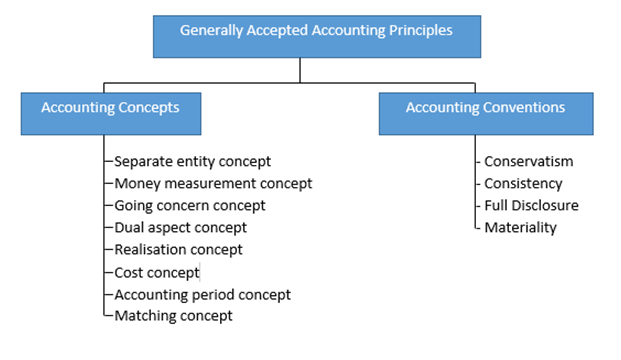
Businesses and companies need to conduct reconciliation to ensure the consistency and accuracy of financial accounts and records within the business. Most companies have numerous assets including immovable property, machinery, inventory, cash assets, and more. Over time, these assets can be sold or written off according to their stage in the lifecycle or due to depreciation. Accounts reconciliation helps take stock of the assets that a company has and enables the balance sheet to reflect the true value. Often the cash balance in the book of accounts and the bank accounts may not match. This could be due to many causes like missed entries, bounced payments, charges incurred, interest accrued, and much more.
What Are the Steps in Account Reconciliation?
- Find any deposits and account credits that haven’t yet been recorded by the bank and add these to the statement balance.
- The company lodges a complaint with the landlord and is reimbursed the overcharged amount.
- You will be provided a confirmation of receipt when your application and/or résumé is submitted successfully.
- The position will act as the primary backup for placing payroll and general warrant stop payments and assisting claimants with forged endorsement claims.
- Fortunately, today’s accountants have the advantage of automation and reconciliation tools like account reconciliation software that can make short work of the time-consuming chore of transaction matching.
These few accounting products fell short in our ratings rubric on a number of fronts. We recommend skipping them in your exploration of the best accounting software for small businesses, unless you can live without some key features these products lack and their price tag feels worth it to you. Other features include inventory tracking, reporting, invoicing, project management tools and the ability to categorize transactions using classes. This lets them save and comment on invoices, save their payment information, invite others to access the account and collaborate on projects they’ve been invited to view. Once the balances are equal, businesses need to prepare journal entries for the adjustments to the balance per books. Adjust the cash balances in the business account by adding interest or deducting monthly charges and overdraft fees.
How Often Should You Do a Bank Reconciliation?
It also missed two $25 fees for service charges and non-sufficient funds (NSF) checks during the month. To successfully complete your bank reconciliation, you’ll need your bank statements for the current and previous months as well as your company ledger. An online template can help guide you, but a simple spreadsheet is just as effective. Enhance your month-end closing and easily integrate your existing accounting or ERP software without disrupting your current finance workflow.
Consolidation and account reconciliation
When you use accounting software to reconcile accounts, the software does most of the work for you, saving you a good deal of time. However, the process still needs human involvement to capture certain https://www.quick-bookkeeping.net/what-are-different-types-of-standards-under/ transactions that may have never entered the accounting system, such as cash stolen from a petty cash box. A reconciliation can uncover bookkeeping errors and possibly fraudulent transactions.
What is Reconciling Account?

Inventory reconciliation makes sure that physical inventory counts align with your general ledger. It accounts for transactions related to inventory and accounts payable and reconciles discrepancies. Additionally, it considers factors like the allowance for obsolescence and inventory valuation. For example, a company maintains a record of all the receipts for purchases made to make sure that the money incurred is going to the right avenues. When conducting a reconciliation at the end of the month, the accountant noticed that the company was charged ten times for a transaction that was not in the cash book.
How HighRadius Can Help You With Account Reconciliations?
This type of reconciliation involves comparing the cash account balances in your company’s general ledger to the balances in your bank statements. It helps identify discrepancies caused by outstanding checks, unrecorded deposits, bank fees, or other timing differences. Account reconciliation is like double-checking the financial books of a business. https://www.personal-accounting.org/ It involves comparing the company’s official records, like the balance sheet, with supporting documents such as bank statements and transaction details. If the numbers at the end don’t match, accountants dig into the reasons for the differences. They then fix any mistakes or missing transactions by making the necessary adjustments in the records.
The Ramp Card is an innovative corporate card, particularly suited for LLCs, that combines automated expense management features with 1.5% universal cashback rewards. Reconciliation ensures that accounting records are accurate, by detecting bookkeeping errors and fraudulent transactions. The differences may sometimes be acceptable due to the timing of payments and deposits, but any unexplained differences may point to potential theft or misuse of funds. This means that the business can conduct the relevant reconciliation based on its needs and type of business. For example, a goods manufacturing company will need to do a stock or inventory check to ensure that the inventory balances are correctly recorded in company accounts.
Reconciling the accounts is a particularly important activity for businesses and individuals because it is an opportunity to check for fraudulent activity and to prevent financial statement errors. Reconciliation is typically done at regular intervals, such as monthly or quarterly, as part of normal accounting procedures. Account reconciliation is a vital process that helps businesses maintain their financial health by identifying errors, preventing fraud, and ensuring the validity and accuracy of all financial statements. Account reconciliation is typically carried out at the end of an accounting period, such as monthly close, to ensure that all transactions have been accurately recorded and the closing statements are correct. Reconciliation for accounts receivable involves matching customer invoices and credits with aged accounts receivable journal entries. It makes sure that your customer account write-offs are correctly recorded against the Allowance for Doubtful Accounts and that discrepancies are addressed.
Finally, look for the transactions that are in the general ledger, but not on the statement, and vice versa. Do you need to record the bank fees or credit card interest in the general ledger? Add and subtract these as appropriate until you can get both sides to match. You just need an EIN number and $75,000 in a business bank account to qualify, and there’s no credit check or personal guarantee required.
There are several steps involved in the account reconciliation process, depending on the accounts that you’re reconciling. No matter what you’re reconciling, it will involve comparing two sets of records to determine accuracy. That’s why account reconciliation remains a key component of the financial close process.
Bank reconciliation statements are tools companies and accountants use to detect errors, omissions, and fraud in a financial account. Bank reconciliation is a simple and invaluable process to help manage cash flows. Interest is automatically deposited into a bank account after a certain period of time. So the company’s accountant prepares an entry increasing the cash currently shown in the financial records. After adjustments are made, the book balance should equal the ending balance of the bank account.
Bank reconciliation statements ensure that payments were processed and cash collections were deposited into the bank. Bank reconciliation statements are often used to catch simple errors, duplications, and accidental discrepancies. Legal software for trust accounting can help you track transactions and reconcile records and bank statements. Clio’s Trust Account Management features, for example, allow you to manage your firm’s trust accounting, reconcile directly in Clio, and run built-in legal trust account reports. Take note that you may need to keep an eye out for transactions that may not match immediately between the sets of records for which you may need to make adjustments due to timing differences. For example, a transaction that may not yet have cleared the trust bank account could be recorded in the client ledger, but may not yet be visible on the trust account bank statement.
Before the reconciliation process, business should ensure that they have recorded all transactions up to the end of your bank statement. Businesses that use online banking service can download the bank statements for the regular reconciliation process rather than having to manually enter the information. Infrequent reconciliations make it difficult to address rules of trial balance problems with fraud or errors when they first arise, as the needed information may not be readily available. Also, when transactions aren’t recorded promptly and bank fees and charges are applied, it can cause mismatches in the company’s accounting records. Bank reconciliation statements are effective tools for detecting fraud, theft, and loss.
The process is particularly valuable for companies that offer credit options to their customers. They can then look for errors in the accounting records for customers and correct these when necessary. In accounting, reconciliation refers to a process a business uses to ensure that 2 sets of accounting records are correct. Using accounting software will make it much easier to reconcile your balance sheet accounts regularly.
To meet this purpose, businesses usually reconcile accounts at the end of each accounting period. Period reconciliations are important to be carried out to find out any discrepancies in the accounting record and to be able to correct them regularly. It allows businesses to ensure their accounting records are maintained in the most accurate form without any errors and discrepancies. A three-way reconciliation is a specific accounting process used by law firms to check that the firm’s internal trust ledgers line up with individual client trust ledgers and trust bank statements. For lawyers, this process helps to ensure accuracy, consistency, transparency, and compliance. An example of reconciliation in accounting is comparing the general ledger to sub-ledgers, such as accounts payable or accounts receivable.